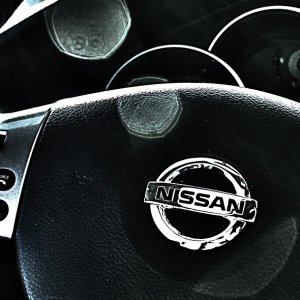Nissan, The Industry We Are About to Live in

STORY INLINE POST
Q: What are the most valuable lessons that the Nissan family has taught you?
A: Nissan is a company that teaches you and gives you a true sense of what a global company is. Our executive committee is composed of people from all nationalities because what matters most is that you are good at your job. Although the company retains its Japanese manufacturing model, its business management is international.
I do not consider myself a disruptive manager, but I do work on disruptive projects. A leader’s role should be clear, transparent and focused on constant effort. We have to be careful about creating waves in a large organization such as Nissan with more than 16,000 employees. A leader should manage disruptive projects and business thinking with a long-term view. We have more than 58 years of traditional history in Mexico. Now, we should think about the future.
Q: What will Nissan’s future look like?
A: At Nissan, we think about the vehicles we will launch five years before they reach the market. After spending over three years in Japan, I can tell you that what is coming will be unbelievable. EVs are a fact now. In Mexico and Latin America, EVs will arrive hand-in-hand with technologies such as e-power. E-power is an electric powertrain with a combustion engine that supports and charges a battery, which is the opposite of a hybrid vehicle that has a combustion engine supported by a battery. EVs provide outstanding performance and this is what will attract customers. Technology adoption is a matter of time. Similar to the cellphone experience, the electrification trend will ramp up within 10 years in Latin America. An obstacle for this technology, however, is infrastructure development, which should be the responsibility of cities and governments as well as the private sector. The EVs that will land in the region will be e-powered units that will not require a large number of charging stations.
Autonomous driving will arrive as well. I have driven fully autonomous Nissan models in Japan. The technology is ready, it is just a matter of making it available. Cities must be connected to vehicles, which is why I see this coming in the midterm, and Nissan will have some advantages in this process. This technology also enables advanced mobility for the elderly. When the gap between vehicles and infrastructure disappears, I imagine a Mexico City center full of autonomous vehicles and less traffic.
The market will change quickly and profoundly. We should be ready for new customers and technological trends that will shape the future challenges of the industry.
Q: How is Nissan’s Intelligent Mobility strategy ramping up in the country?
A: This has been part of our core business for over 12 years. We were the first to equip vehicles with parking cameras 10 years ago. Those details are part of what makes a Nissan vehicle. At the time, these components seemed disruptive, but they quickly became the new normal. Today, we are launching a new Versa model that has all those features and more. Intelligent Mobility is not a slogan. We have truly made technology the core of our vehicles.
Technology developments also will translate to advances that the customer will find useful. A car full of technology with little customer application is not practical. There are customers who cannot conceive of a car without a camera or proximity sensors, for instance, because these make their life easier. Nissan Intelligent Mobility has already arrived in Mexico, although it will require several stages before being fully implemented. It is a platform we use to constantly offer our customers a better product.
Q: The Nissan Switch program has already explored shared mobility in the US. What are your plans for the Mexican market in this regard?
A: We will use Nissan Switch in Houston as a beta program we can learn from. The project is really interesting because it makes total sense in large cities like Mexico City. It might not be suitable for the entire country and might be focused solely on cities. The beta program will help provide a clearer picture. What is certain is that shared mobility schemes are coming. It will be focused on certain cities and customer segments rather than being a mass-scale program. We do not want a Nissan Switch in Mexico just for the sake of it. We want it because it will be useful for our customers.
Q: How has Nissan maintained a harmonious relationship between dealerships and the brand?
A: There are three elements in this equation: us as a brand, dealerships and our financial arm. The endgame is to offer the best service to the customer. Without a solid financial brand solely focused on automotive operations, success can be elusive. I have been in seven countries and this is always the case. Although some banks work with OEMs and dealerships, their core business is not the automotive industry. CrediNissan’s specialized focus, for example, gives it an added value. We take care of our customers and are always looking at how we can make our products better. Not everything is about price. Customer service is key to improving competitiveness. We do offer a competitive price, but we also offer outstanding service.
The Mexican market is entering a new phase. All dealerships from all brands, not only Nissan, are reaching a stage where a traditional service is no longer enough. New technologies are arriving and over the next 10 years, business models will move toward digitalization and service. We will see dealers who pick up cars at the client’s house for maintenance and who help with the legal permits for getting a license plate. People have less time than before, so they need someone who can make life easier for them. Dealerships will become a help center for customers. The use of Big Data is really important in this regard. As cities are growing, a dealership with an originally very good location might not be as successful today. We have to keep up with the growth of cities.
Q: What are Nissan’s strategies to reach 24 percent market share?
A: Having a 24 percent market share is not a goal but a consequence. If we launch new models, take care of our customers, improve our dealerships, train our salesforce and offer a competitive price, I have no doubt that we will reach that mark and go beyond it. Our true objective is continuous improvement, which requires attention to different variables. The recipe that is working for us is offering a better customer service with an unbeatable product. Versa 2020 is an example. We expected good results due to our market intelligence analysis, but we did not think the results would be as positive as they were. Versa, in its different versions, is selling 10,000 units a month despite the additional specifications the model had to comply with and that ultimately were passed on to the customer. However, when the customer sees the value in the product, they respond to it. Within the next 18 months, we will renew 60 percent of our product portfolio.
We are the first Mexican-Japanese brand in the market. Our almost 60 years of history in the country mean something. We are fully integrated into the Mexican imagination and are perceived as local even through our brand is Japanese.
Q: Nissan is the second-largest producer in the country. What are your expectations for vehicle production in 2020?
A: It will be quite similar to 2019, although I believe the downward trend has stopped. What we have experienced is not a crisis but a regular cycle. In the automotive industry, we have five to seven-year product cycles. In Mexico, we had over 10 years of continuous growth, which could not go on forever. We have reached the bottom of the cycle now and will begin to see slightly positive growth before the industry starts to ramp up again.
In each market, the cycle is different. The Mexican market was closed 25 years ago and today it is carries a volume of 1.3 million cars. At its worst, it is still a big market. To reach the 2-million mark, we need to work with the government. The public sector has to create a whole mobility plan that includes not only cars but public transportation. Vehicles are just a fraction of the mobility equation.
Q: What is Nissan’s strategy regarding local supplier development?
A: We do not necessarily look for local suppliers, we look for world-class suppliers and it turns out that Mexican suppliers are world-class. We do not add companies to our supplier base just because they are Mexican. They have to be good and Mexican suppliers have proven they can deliver global quality. Our products are exported to more than 80 countries, which means our quality has to be world-class. That is a challenge companies have to deal with.
Q: What is the role of Nissan’s R&D center in Toluca?
A: The center is focused on product R&D. Over the five-year development period of each new vehicle, we perform multiple safety and engineering tests. For instance, the NP300 sold in Chile is manufactured in Mexico and must withstand an altitude of over 5,000m. We replicate those conditions at our R&D center to improve the product. It is a very simple continuous improvement process but it demands a great deal of technology and research. Our facilities are filled with engineers and state-of-the-art labs that measure different specifications. For example, we freeze vehicles and then heat them up to 150°C.
We are also creating a technology development hub at our new headquarters in Mexico City. We will also create a human resources hub that will provide service to the Americas and supply all the talent that Nissan needs on the continent. If any Nissan employee has a problem, a Mexican will take care of it.
Nissan Motor Corporation is part of the Renault-Nissan-Mitsubishi Alliance. Nissan Mexicana has been the top-selling brand in Mexico for 10 years straight. It has three manufacturing plants in the country, plus another dedicated to the INFINITI brand








 By Alejandro Enríquez | Journalist and Industry Analyst -
Tue, 05/12/2020 - 08:00
By Alejandro Enríquez | Journalist and Industry Analyst -
Tue, 05/12/2020 - 08:00
















